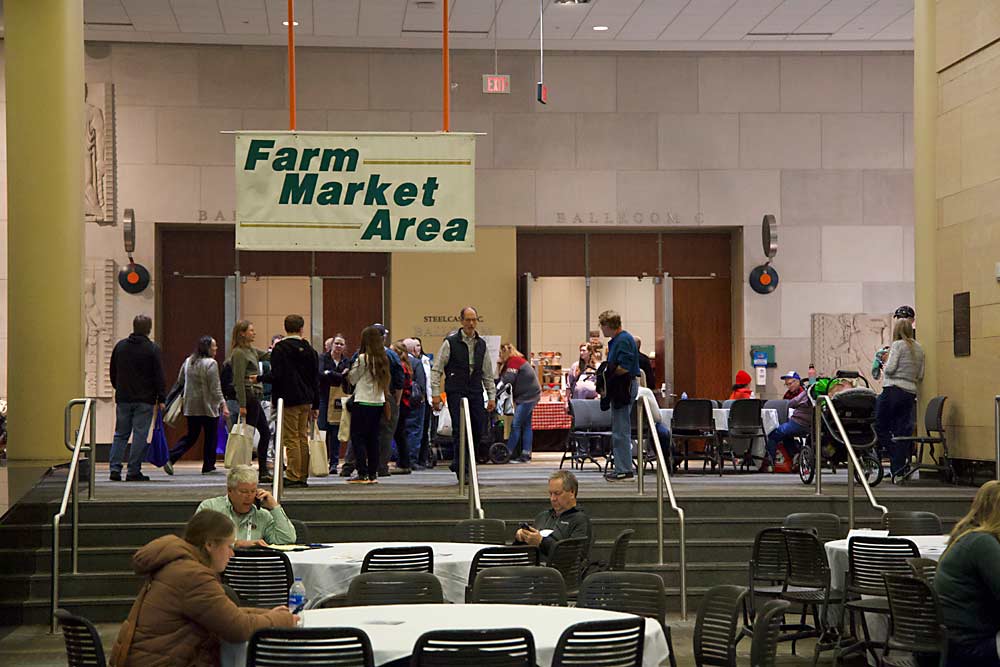
If you’re a fruit grower and you’re worried about invasive pests, Michigan State University educators have a message for you: Keep calm and don’t panic.
That particular message came from entomology professor Rufus Isaacs, who was talking to grape growers about spotted lanternfly during the Great Lakes Fruit, Vegetable and Farm Market EXPO in Grand Rapids, Michigan, on Dec. 6.
“Whenever there’s an invasive pest, people get very excited and very concerned,” Isaacs said.
A small SLF population was found in Southeast Michigan a few months ago, generating a lot of alarming news stories. But the invasive pest has yet to be found in the state’s main grape-growing regions.
“We’ve heard horror stories from Pennsylvania. You read the trade press and they’ve got a lot of stories about what it can do. But I’m going to go through what I think it means for Michigan, and hopefully you leave here less stressed,” Isaacs told the grape growers. “You do have some good tools.”
Isaacs wasn’t the only MSU educator to discourage panic over invasive pests during the EXPO’s first day. Entomology professor Julianna Wilson discussed brown marmorated stink bug with a group of apple growers. Michigan has never had the BMSB population levels that mid-Atlantic states have dealt with, and, despite reports of BMSB spreading through the state’s fruit-growing regions, the slow-moving pest has done only limited damage to Michigan fruit. Compared to the “scourge” of spotted wing drosophila, BMSB is a manageable fruit pest here, Wilson said.
EXPO speakers discussed pest management, too. Michelle Moyer, professor and viticulture extension specialist with Washington State University, talked about the importance of sprayer calibration.
“How you spray is often more important than what you spray,” Moyer said. “Product efficacy doesn’t matter if sprayers aren’t properly calibrated.”
Moyer gave her audience a season-start sprayer maintenance checklist: Replace or repair all nozzles. Check all pressure gauges. Clean tanks and lines.
She also said cultural practices like shoot thinning and pruning can improve spray coverage.
Weather conditions are important, too. You can’t spray when it’s too windy. But you also can’t spray when there’s no wind, because the material ends up volatilizing or hanging in the air for long periods, and who knows where it will end up, Moyer said.
High temperatures and low humidity can shrink spray droplets — and smaller droplets drift farther. The optimum conditions for spraying are between 50 degrees and 80 degrees Fahrenheit, with humidity greater than 40 percent. That usually happens in the early morning, she said.
In the same fruit session, Wilson discussed biorational pest-control options. There are many new products, and, so far, studies of how they work and where they fit in pest management programs have been limited, she said.
Biorational tools such as pheromones can be used to manipulate pest behavior, to monitor for pest emergence and to set thresholds that could be used for mating disruption. Entomopathogens are also a promising tool. Entomopathogenic nematodes are especially useful for soil pests. Other biorational tools include life-stage and species-specific pesticides, model-guided decisions and conservation of natural enemies, Wilson said.
Wrapping up her talk, Wilson told the EXPO audience that she’s leading a new, federally funded project studying the future of mating disruption in specialty crops nationwide.
—by Matt Milkovich






Leave A Comment